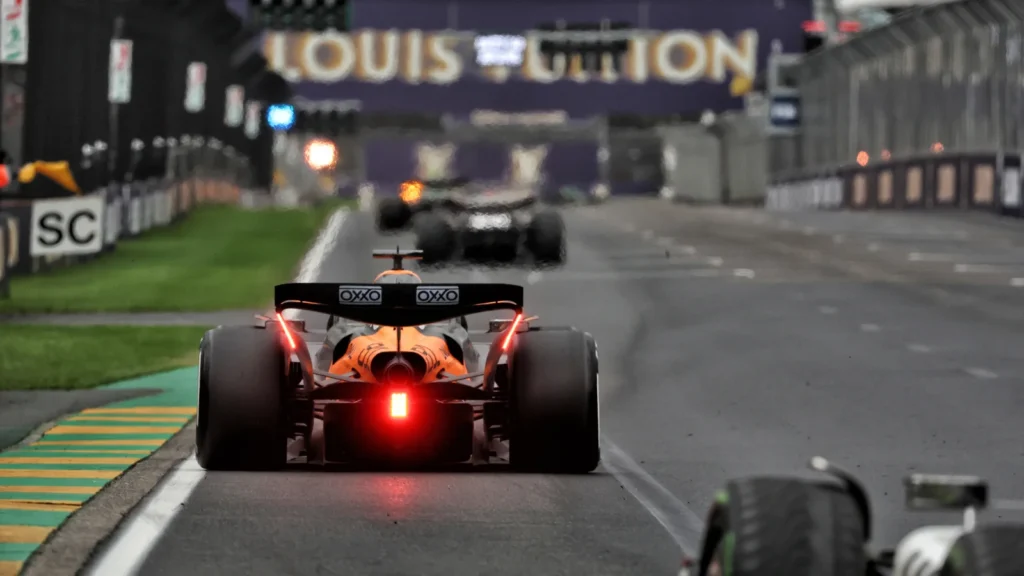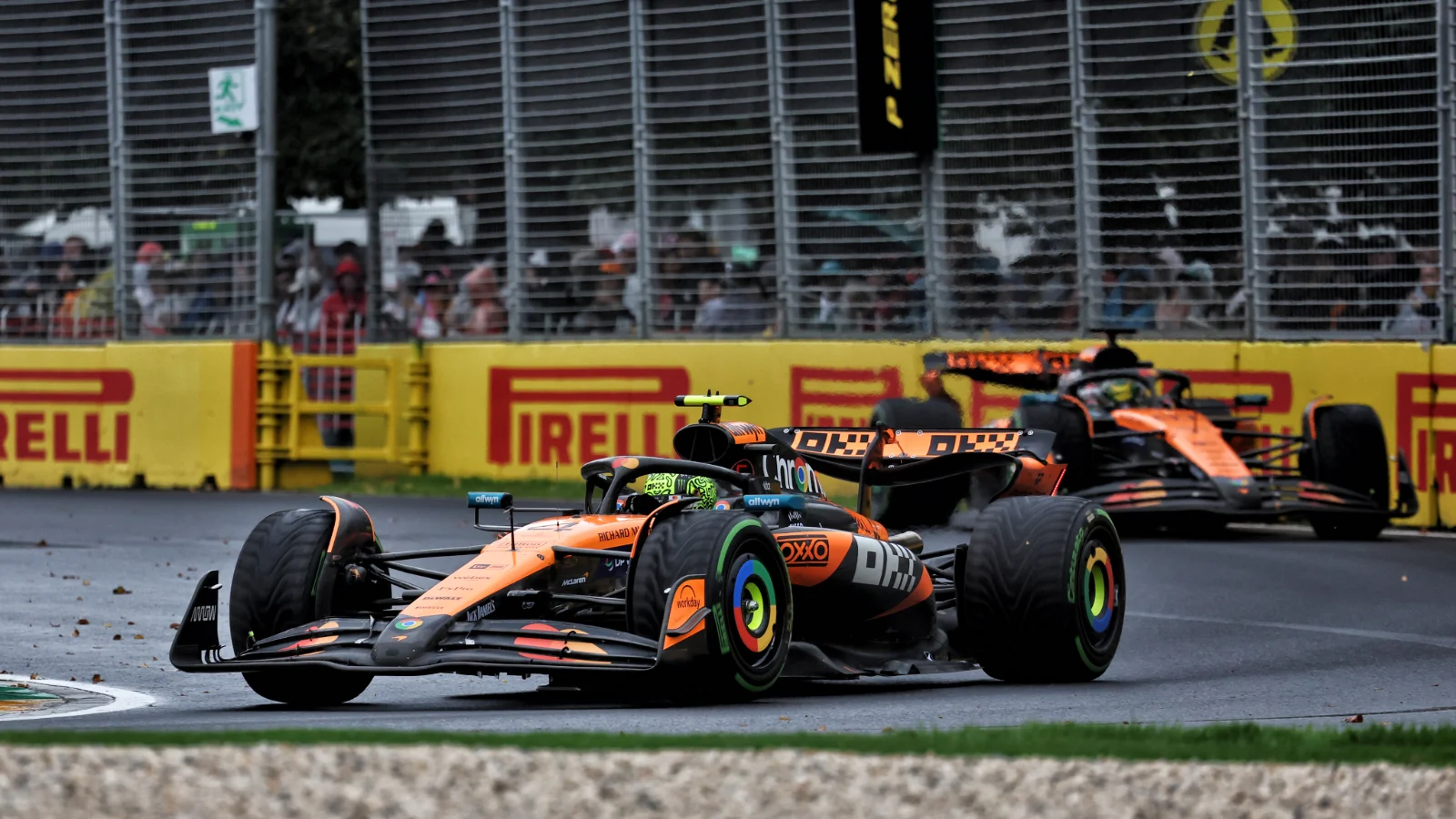McLaren has explained how the presence of backmarkers and an uncertain weather radar caused the team to issue team orders in Formula 1‘s Australian Grand Prix.
Having resisted Max Verstappen’s initial threat, McLaren was in a dominant position as Lando Norris led Oscar Piastri with a considerable gap to the Red Bull behind.
But as the track dried approaching half distance, Piastri emerged as a genuine threat to his team-mate as he closed to within the one-second window to activate DRS.
However, McLaren intervened to tell Piastri to maintain position behind Norris, much to the Australian’s displeasure as he expressed that he was quicker at that stage.
The Woking-based squad’s decision went against the standpoint that it had communicated in the lead-up to the season that the two drivers would be allowed to race.
McLaren boss Andrea Stella has divulged that concern about navigating lapped cars ahead and the threat of more rain descending prompted the team to take action.
“So, during the race, at some stage, we had to go relatively soon through some backmarkers, while the cars were close together and the conditions on track were still a little tricky with Intermediates tyres that were running down a bit in terms of their rubber on,” Stella told media including Motorsport Week.
“And at the same time, we were receiving some updates on the weather forecast.
“So, we had the going through the backmarkers and the update on the weather forecast that led us to close for a short period of time the internal racing between our two drivers until we had clarity as to the weather prediction, what this meant for how we should have used the tyres, and then until we had closed the matter of overtaking the backmarkers.
“So, once this was completed and the weather was assessed, then we reopened the racing.”

McLaren wanted to limit holding pattern period
Stella has insisted that McLaren was eager to limit the holding pattern to a limited time in order to give Piastri an adequate chance to pursue a race win on home soil.
“The drivers were aware when we gave the team order to hold positions, and then they were aware when we told them to be free to race,” he elucidated.
“And in the meantime, I left to review the communications with the drivers, but for drivers, we didn’t even know ourselves how long this period would have been until the weather forecast had become a little clearer. So, we just tried to keep this period as short as possible, and the drivers know that this is the case, so we don’t want to make it unnecessarily long.”
Piastri mistake vindicated McLaren decision
McLaren did reverse its stance on permitting the duo to race, but that arrived once Piastri had dropped back having dipped a wheel in the gravel going through Turn 6.
Stella believes the two-time F1 race winner’s minor mistake vindicated the squad’s choice to prohibit him from making an earlier push to challenge Norris for the lead.
“I think in terms of retaining a consistent pace at that stage of the races, it was difficult, which is also one of the reasons why we wanted to pause the internal competition for a few laps, because both drivers were making little mistakes here and there because I think as soon as you were putting the tyres on a slightly more wet portion, then you may have a sudden oversteer, you may have a little lock-up because the front left was already quite worn,” Stella elaborated.
“So I don’t know exactly what kind of issues he might have had in terms of pace in this phase of the race, but I suspect that it might have to do with these little issues that pushing at that level in those conditions, I’ve seen regularly on either of the drivers.”
READ MORE – McLaren reveals Lando Norris won F1 Australian GP with ‘badly damaged’ floor










